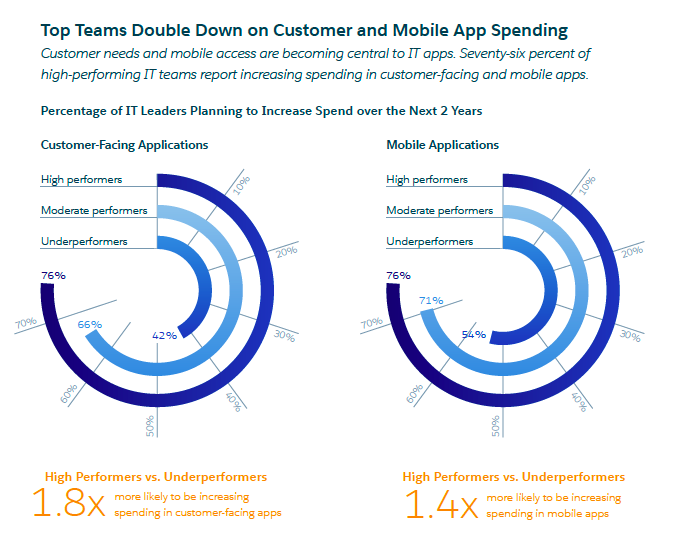Salesforce: How Top IT Teams are Moving to Mobile
OREANDA-NEWS. April 20, 2016. We are living and working in a mobile-driven era. Nearly two-thirds of Americans overall and 85% of young adults are now smartphone owners, according to Pew Research Center. This is changing the way people shop, read, communicate, eat, travel, work, etc. In order to be successful today, companies need to prioritize mobile. There’s nothing more frustrating to a modern-day user than not being able to easily access information from their phone. This is why nearly 90% of apps launching in the next 12–18 months by IT teams will be created with a mobile-first mindset, reported by Salesforce Research’s “2016 State of IT” report.
Salesforce Research surveyed over 2,200 IT leaders and CIOs across the globe on IT trends. Here’s how high-performing teams are moving to mobile, based on the report:
Embracing Digital Transformation
In order for businesses to provide the most satisfying mobile experience for customers, the company must complete its evolution into the digital age. IT is now the organization within the company responsible for steering the ship into the digital harbor. Leading IT teams are embracing the transformation — actually, high-performing IT teams are 4.2x more likely to say they are excellent or above average at implementing digital transformation across their company.
Investing Heavily in Customer-Facing and Mobile Apps
In the age of the customer, businesses are expected to operate on the consumer’s turf. Companies that are molding their business model around customer preferences are the companies that are causing disruption in their markets. Top teams understand this — in fact, 76% of high-performing IT teams are planning to increase spending in customer-facing apps over the next two years.
To be a customer-centric company is to also be a mobile-first company —they go hand in hand. This explains why 76% of top-performing IT teams will increase spending in mobile apps over the next two years.

Creating Employee Productivity Apps
Customers aren’t the only ones looking for easy-to-use apps — employees expect to be able to use their phone to perform daily tasks, too. Forty-two percent of apps being developed by IT teams are employee-productivity apps. It’s not enough to deliver mobile to customers — if a company isn’t prioritizing mobile for its workforce it will make it difficult for employees to service customers to the best of their ability.
Bridging the Skills Gap
The infamous skills gap is a hurdle for many IT leaders as they look to fully transform to digital and begin streamlining their mobile app development process. One-third of IT teams struggle to keep skills current with emerging tech. Top teams are bridging the gap with training, development tools, and (ironically) technology. Ninety-six percent of high-performing teams are investing in training for their technical staff.
The cloud is an example of a technology that leading IT teams are using to offset development needs. Investments in cloud services allow companies to leave the backend heavy lifting to a trusted technology solution while their employees focus on innovation. Nearly two-thirds of companies that operate in the cloud rate their ability to digitally scale as above average.
Interested in learning more about how top IT teams are making the move towards mobile? Download the full report:





Комментарии